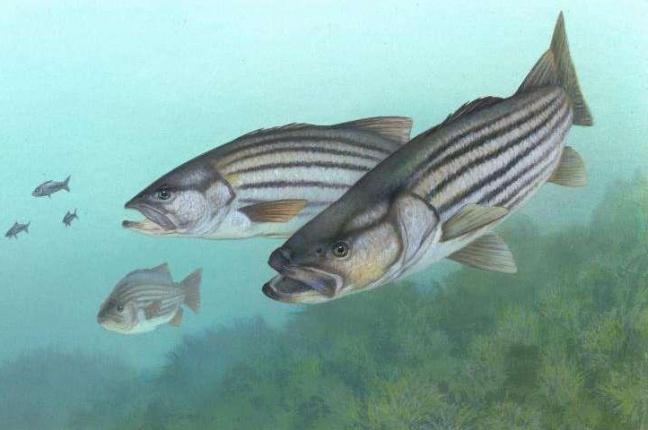Bass Use Same Muscles to Swim and Suck in Food

PROVIDENCE, R.I., June 22 (UPI) — Bass and other fish often accelerate as they close in on prey — a move researchers have dubbed the power surge. Now, a new study suggests that burst of speed serves two purposes.
[one_fourth]
[/one_fourth][three_fourth_last]
By firing their back and belly muscles, bass are able to kick their swimming into high gear while also triggering the vacuum mechanism that sucks in their prey.
In other words, the fish use one muscle group to execute two important moves. Evolution, it turns out, is rather efficient.
For fishermen, the feeding action of bass, trout and other fish is a special thing to watch — bait fish and insects are stealthily funneled into the mouth, no chomping or chewing necessary. Fly fishermen sometimes report their flies being sucked off the surface of the water, never noticing the trout just below. The deceived fisherman having failed to set the hook, the trout quickly spits the fake food back out and escapes.
Scientists have long been trying to understand this vacuuming action, but research showed none of the fishes’ mouth bones properly explained the suction power.
Researchers at Brown University were recently able to film bass feeding using a 3-D x-ray camera, allowing them to zero in on bone and muscle movement. Their observations and calculations showed that the swimming muscles were responsible for 95 percent of the suction power used to slurp up prey.
“I think everyone would be surprised by the extent to which the swimming muscles are really the source of power,” study co-author Elizabeth Brainerd, professor of ecology and evolutionary biology, said in a press release.
The findings are an ideal example of the anatomical creativity inspired by evolutionary pressures. Needing a powerful feeding mechanism, fish evolved to source muscle capacity from new sources.
“It’s like they are doing a stomach crunch to open their mouth,” said co-author Thomas Roberts, professor of ecology and evolutionary biology.
“There’s only so much power you can get out of muscle,” Roberts said. “If you need a really powerful activity, as these fish do, you need a really elaborate pattern of evolution that allows you to recruit more muscles from outside of the head.”
The new research was published in the journal PNAS.







